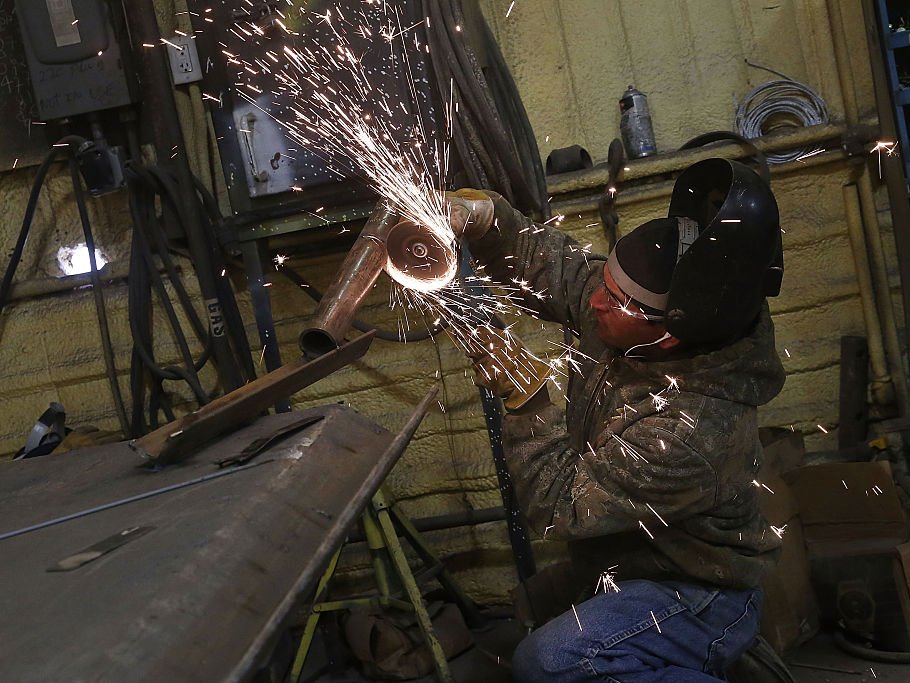
President Barack Obama is handing off to President-elect Donald Trump after an impressive labor-market recovery.
December 2016 marked the 75th straight month of job creation in the US. There has never been a streak this long in the 78 years the Bureau of Labor Statistics has reported employment figures.
The unemployment rate was 4.7%, less than half of the 10% peak in 2009.
The jump in average hourly earnings — to the highest year-over-year growth rate since 2009 — showed that the labor market continued to tighten.
“Obama gets high marks for a pretty solid and complete labor market recovery,” said Harry Holzer, a professor of public policy at Georgetown University. “But there are at least two or three large problems remaining,” he told Business Insider.
The first is labor-force participation. The share of the population that is currently employed or actively looking for a job has fallen since its peak in 2001, including through Obama’s term in office.
This overall decline has not been all that surprising to economists. It has been driven, in part, by the demographic reality that baby boomers are getting older and starting to retire. This trend is expected to continue, putting the lid on how high the participation rate can rise.
What’s worrying, Holzer said, is that labor-force participation among non-college graduates has also continued to fall.
Related to this is the issue of wage stagnation, which plagued the eight years of Obama’s presidency but has received a jolt in the last year.
It’s an indicator of a broader problem with inequality: People with college degrees have made progress, but those who only got as far as high school have not, Holzer said.
“That’s part of why so many of them have been dropping out of the labor force, especially men — white, less educated men,” a demographic that voted predominantly for Trump, Holzer noted. While the skills gap among these two groups makes it reasonable to expect an income disparity, it could be smaller.
Adding to that disparity, nearly everyone with the skills most in demand has been hired. That’s what Federal Reserve officials allude to when they say the economy is near full employment. But it also exposes the lack of skills among those who would prefer to work in higher-paying jobs. Holzer said Betsy DeVos, Trump’s nominee for Secretary of Education, was not the best person to improve higher education.
Holzer said he’s skeptical that Trump’s approach would address these issues. For one, the low unemployment rate indicates that there is not much spare capacity left in the economy.
Also, Trump’s focus on reworking trade relationships and reforming immigration wouldn’t necessarily fix these problems.
“Trade and immigration really don’t account for the wage stagnation of these workers,” Holzer said. “It has more to do with technology and weakening of some labor-market institutions.”
Take manufacturing, for example. Even though employment has slowed, the higher per-worker output of remaining workers has more than made up for the shortfall, thanks to increased automation. A big push to boost American manufacturing, then, might not necessarily create more jobs.
During a commencement speech at the University of Baltimore in December, Fed Chair Janet Yellen said that while automation has cheapened some repetitive tasks, it has created demand for workers in other industries where technology is important.
“Like technological change, globalization has reinforced the shift away from lower-skilled jobs that require less education to higher-skilled jobs that require college and advanced degrees,” she told the graduating students. “The jobs that globalization creates in the United States, serving a global economy of billions of people, are more likely to be filled by those who, like you, have secured the advantage of higher education.”
“He’s going to do these showy things like he does with Ford and Carrier, and maybe he’ll build the wall,” Holzer said of Trump. “I expect that would do very little for American workers,” Holzer said.
NOW WATCH: Watch Yellen explain why the Federal Reserve decides to raise rates













